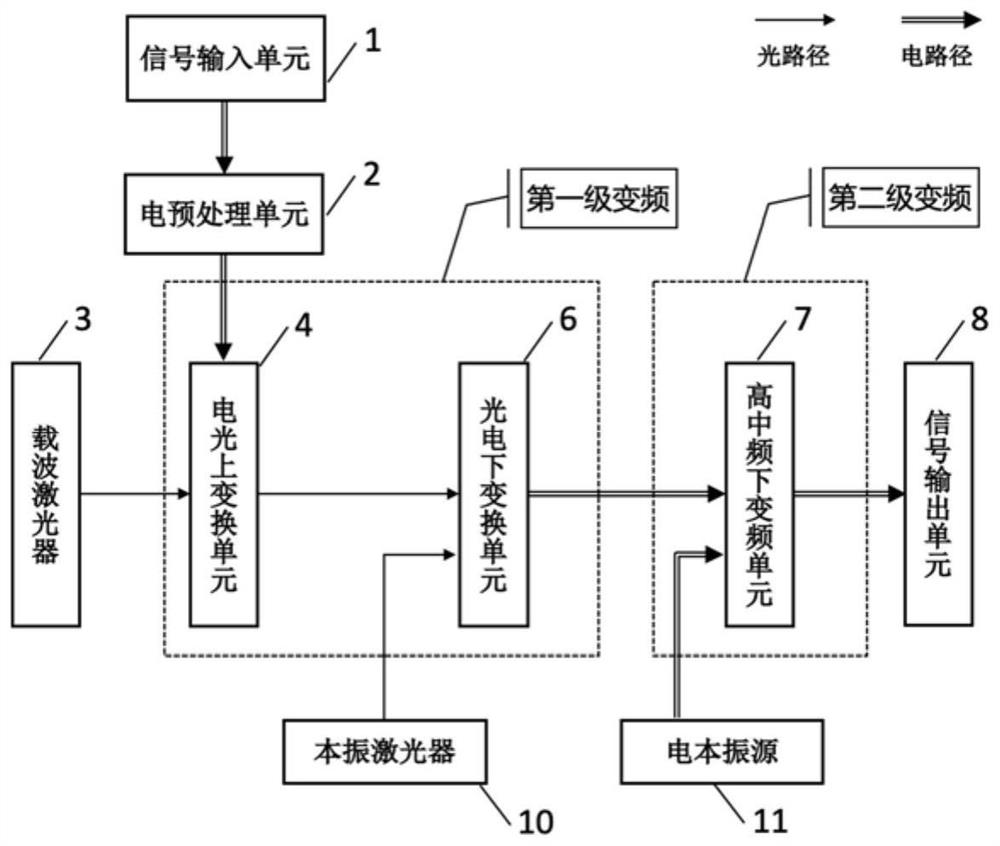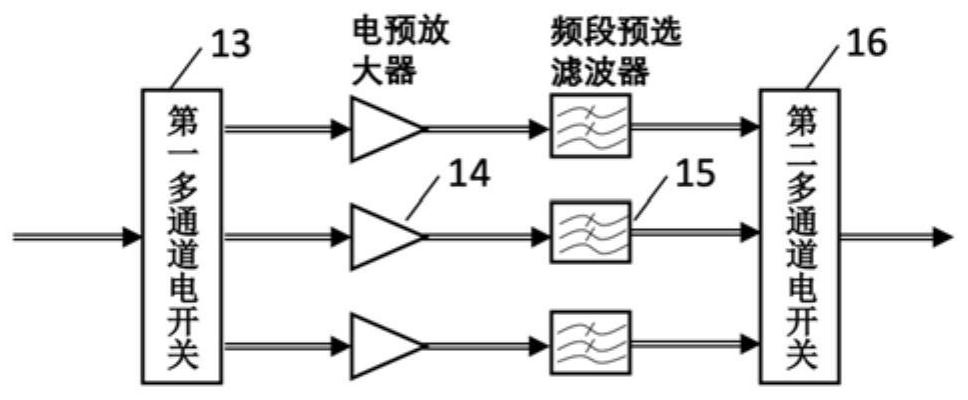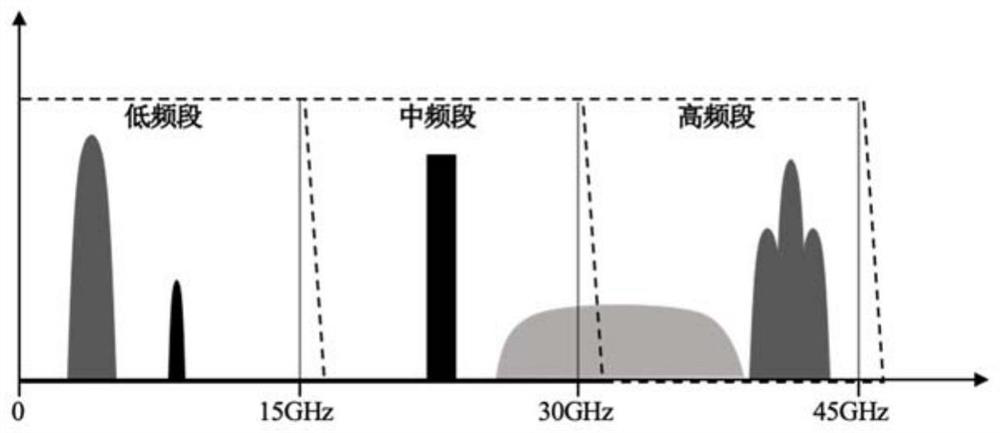A superheterodyne microwave photon receiving system and method
A microwave photon and receiving system technology, applied in the field of microwave photon and microwave radio frequency, can solve the problems of spurious interference and low-frequency microwave signal ineffective frequency conversion, etc., and achieve large frequency conversion range, good image and intermodulation and other spurious suppression, The effect of spurious suppression such as good image
- Summary
- Abstract
- Description
- Claims
- Application Information
AI Technical Summary
Problems solved by technology
Method used
Image
Examples
Embodiment 1
[0049] Such as figure 1 As shown, the superheterodyne microwave photon receiving system provided by Embodiment 1 of the present invention includes a signal input unit 1, an electrical preprocessing unit 2, a carrier laser 3, an electro-optical up-conversion unit 4, a local oscillator laser 10, and an opto-electronic down-conversion unit 6 , an electric local oscillator source 11 , an intermediate frequency down-conversion unit 7 , and a signal output unit 8 .
[0050] Wherein, the signal input unit 1 receives the microwave signal to be detected and inputs it to the electrical preprocessing unit 2 . The electrical preprocessing unit 2 performs frequency band preselection filtering on the microwave signal and then inputs it to the electro-optical up-conversion unit 4 . The carrier laser 3 generates an optical carrier to be input to the electro-optical up-conversion unit 4 .
[0051] The electro-optical up-conversion unit 4 up-converts the input microwave signal to the optical ...
Embodiment 2
[0061] Such as Figure 6 As shown, the second embodiment is basically the same as the first embodiment, and the similarities will not be repeated. The difference is that the superheterodyne microwave photon receiving system further includes a photon preprocessing unit 5 . The photon pre-processing unit 5 is arranged between the electro-optic up-conversion unit 4 and the photo-optic down-conversion unit 6 , and performs photon pre-processing on the input optical-carrying microwave signal before inputting it into the photo-optic down-conversion unit 6 .
[0062] In some preferred embodiments, the photon preprocessing unit 5 includes: an optical amplifier 20, a first multi-channel optical switch 21, an optical filter bank 22 and a second multi-channel optical switch 23, referring to Figure 7shown. The function of the optical amplifier 20 is to amplify the power of the input optical-carrying microwave signal. The function of the first multi-channel optical switch 21 is to split...
Embodiment 3
[0067] Such as Figure 9 As shown, the third embodiment is basically the same as the first embodiment, and the similarities will not be repeated. The difference is that the superheterodyne microwave photon receiving system further includes a management and control unit 9 .
[0068] The optical carrier and the all-optical local oscillator used in the present invention are respectively generated by two independent lasers. Since the two independently operating lasers are non-correlated, the relative frequency and phase relationship between the optical carrier output by them and the all-optical local oscillator is uncertain, and the high-frequency signal generated by the first-stage frequency conversion will contain the optical carrier The beat frequency phase noise and frequency offset error between the optical carrier and the all-optical local oscillator, so to achieve high-performance microwave signal down-conversion reception, it is necessary to correlate the frequency and pha...
PUM
 Login to View More
Login to View More Abstract
Description
Claims
Application Information
 Login to View More
Login to View More - R&D
- Intellectual Property
- Life Sciences
- Materials
- Tech Scout
- Unparalleled Data Quality
- Higher Quality Content
- 60% Fewer Hallucinations
Browse by: Latest US Patents, China's latest patents, Technical Efficacy Thesaurus, Application Domain, Technology Topic, Popular Technical Reports.
© 2025 PatSnap. All rights reserved.Legal|Privacy policy|Modern Slavery Act Transparency Statement|Sitemap|About US| Contact US: help@patsnap.com



